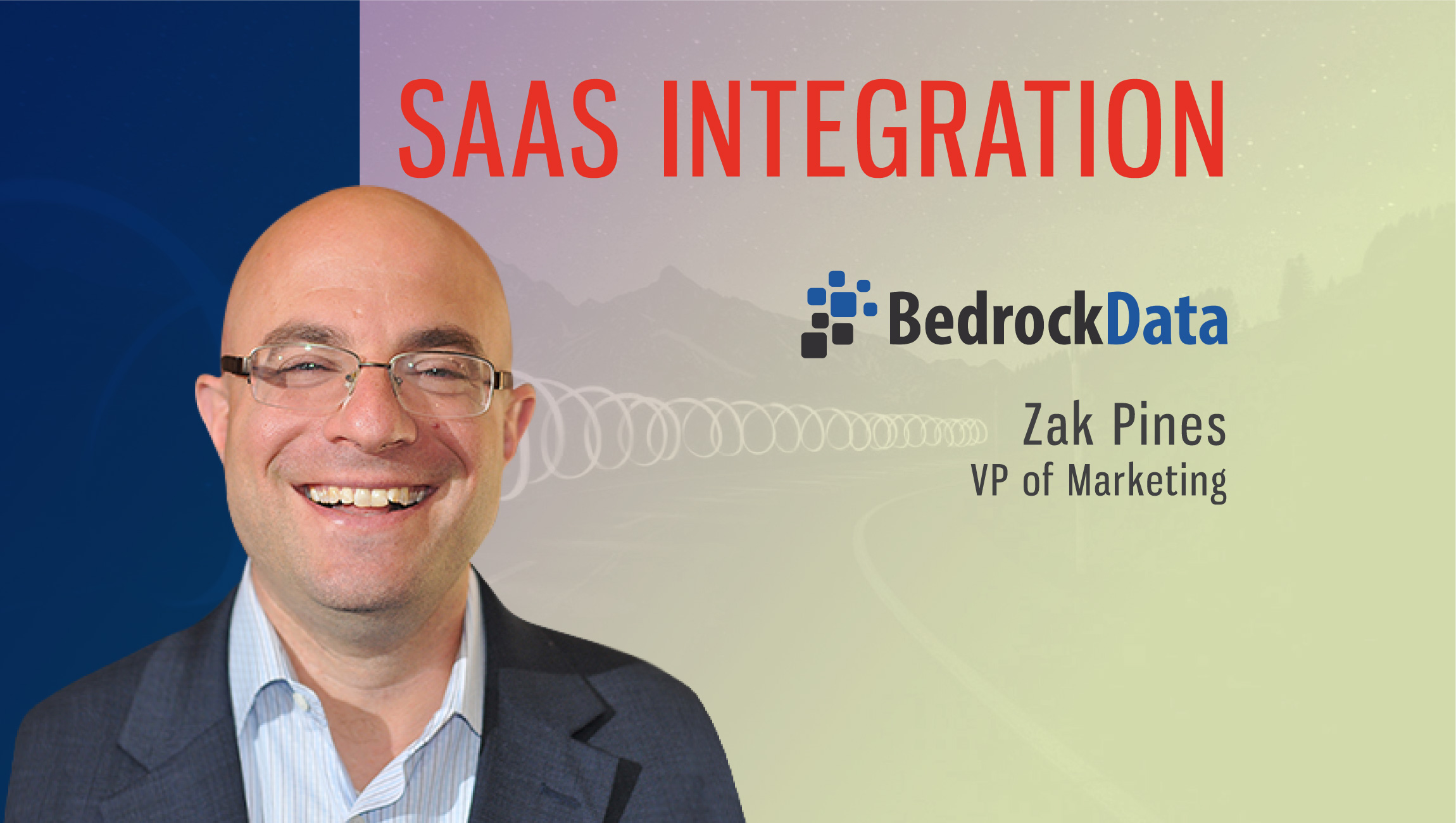Zak Pines
VP, Marketing, Bedrock Data
Recently, Bedrock Data announced a new wave of connectors for its Fusion software. The new set of connectors enables customers to better automate the process of getting data out of multiple applications, while matching records, resolving conflicts, and normalizing data. To dive deeper into Fusion for SaaS platform, and learn more about its compatibility with other marketing technology platforms, we spoke to Bedrock Data’s VP of Marketing, Zak Pines.
Html code here! Replace this with any non empty text and that's it.
Tell us about your role at Bedrock Data and the team/technology you handle.
I run marketing at Bedrock Data, which includes product marketing, digital marketing, content, demand generation and PR. As a data-driven marketer, I focus on driving revenue growth for our Sync and Fusion products.
What is the core tenet of your technology driving Fusion?
We believe that more business value comes from analyzing data than being forced to spend time compiling, cleaning and formatting data.
Traditionally, IT, analysts and ops teams have had to manually extract data from each application, format it for consistency, eliminate duplicates, resolve conflicts, and transform many data models into a single schema. By automating the entire data pipeline, we save people the agony of having to clean data by hand. They can get right to analysis and work with clean data, rather than spending time mapping relationships between fields and join tables into a master dataset.
What compelled you to make significant expansion in your capabilities with the latest Fusion release?
The number of SaaS applications used by SMBs continues to grow; the latest count is an average 18 SaaS applications. We are expanding our connector categories so customers can create a unified warehouse not only of data from marketing, sales and support systems, but also finance, project management, subscriptions and more. We want our pre-built connectors to cover as many systems as possible, as a big part of our value for a customer is the fact that they can get a warehouse built and populated with their SaaS systems extremely quickly, in a matter of minutes.
How would these benefit your existing customers and prospects?
Fusion is self-service – in fact, you can set up a Fusion account for free right here. So our customers can connect their systems, and then at the click of a button, get a cloud data warehouse. They don’t have to pull raw data records from external APIs. They don’t need to do complex data manipulations. Fusion maps all the relationships between systems for them, which rules engine produces a unified set of “fused records” that can feed any analytics, dashboard, or business intelligence tool.
What does your product roadmap look like for 2018-2020?
In the near term, it’s more connectors and data warehouse features. We’re also building out strategic partnerships with complementary technologies, the BI tools, companies like Looker and YellowFin and others. We’re also getting fantastic feedback from Fusion customers and a lot of that feedback is getting factored into product planning and roadmap.
Tell us more about your compatibility with other marketing technology platforms, including Tableau, Looker and Netsuite?
Sure. On the connector side, Fusion combines data from NetSuite, Marketo, HubSpot, Salesforce and other SaaS applications, then stores that data in a cloud data warehouse. We have pre-written connectors using the APIs of those companies, so from an end-user perspective it’s just a matter of authenticating their systems and then they can pipe data into the warehouse.
The warehouse is a unified warehouse of all of the data sources. For example, company records or accounts records are unified across all sources, and relationships between objects are standardized for easy querying. That central warehouse is in a mySQL format today — with other database formats available soon, and that source data warehouse can be used as a feed for just about any BI or dashboard tool including but not limited to Tableau, Looker, Microsoft PowerBI, Amazon QuickSight, YellowFin, and MetaBase.
To what extent do you leverage AI/Machine Learning?
Right now, we see holistic analytics as playing a more crucial role in driving business decisions. With the rise in AI and machine learning, in the future I could see being able to automate actions on changes to records, in real- time or, or sending webhooks and creating workflows for actions such as a notifying an account manager, or contacting a customer via social media. This starts with having a trusted data source to feed these predictive analytics systems, and technologies that make the data available, regardless of format or where it originates.
Thanks for chatting with us, Zak.
Stay tuned for more insights on marketing technologies. To participate in our Tech Bytes program, email us at news@martechseries-67ee47.ingress-bonde.easywp.com






